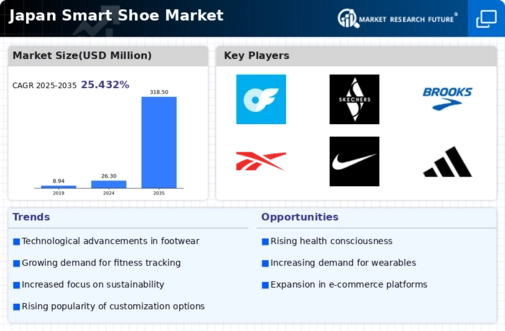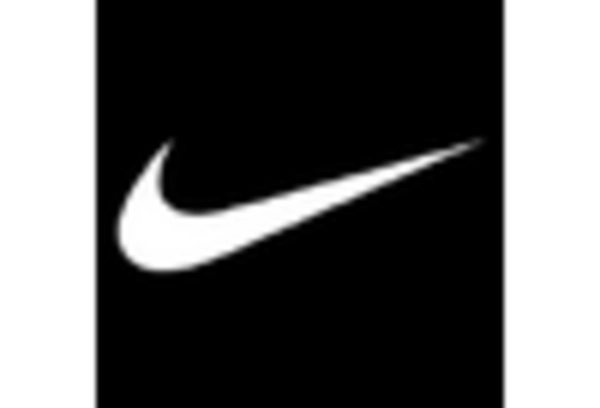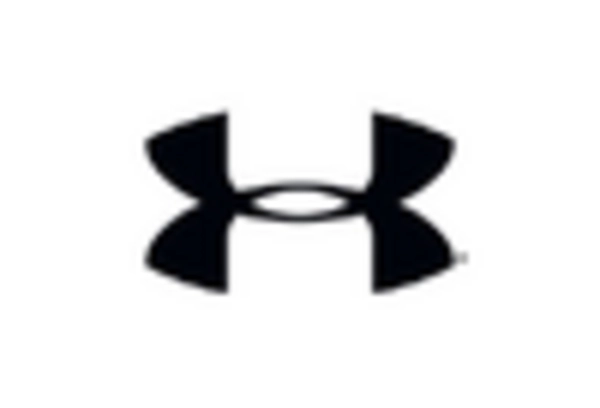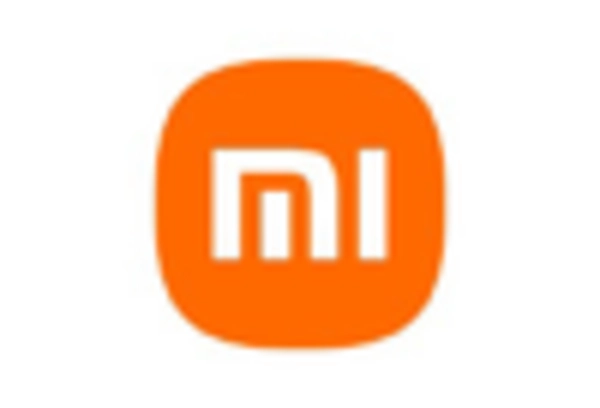Rising Health Awareness Among Consumers
In Japan, there is a notable increase in health awareness among consumers, which significantly impacts the smart shoe market. As individuals become more conscious of their fitness and well-being, the demand for products that facilitate health monitoring rises. Smart shoes equipped with features such as step tracking, calorie counting, and posture correction are becoming increasingly popular. According to recent surveys, around 60% of Japanese consumers express interest in fitness-related technology, indicating a strong market potential. This growing health consciousness is likely to propel the smart shoe market forward as consumers seek innovative solutions to support their active lifestyles.
Increased Urbanization and Active Lifestyles
Urbanization in Japan is contributing to a shift towards more active lifestyles, which is a significant driver for the smart shoe market. As more individuals reside in urban areas, the demand for convenient and functional footwear that supports daily activities is rising. Smart shoes that offer features such as navigation assistance and fitness tracking are particularly appealing to urban dwellers. The trend towards walking and cycling as primary modes of transportation is also influencing consumer preferences. This urban lifestyle shift suggests that the smart shoe market may experience growth as consumers seek products that align with their active, on-the-go lifestyles.
Growing E-commerce and Online Retail Channels
The expansion of e-commerce and online retail channels in Japan is reshaping the smart shoe market. With the increasing popularity of online shopping, consumers are more inclined to explore and purchase smart footwear through digital platforms. This shift is supported by the convenience and accessibility that e-commerce offers, allowing consumers to compare products and read reviews easily. Recent data indicates that online retail sales in Japan are expected to surpass $200 billion by 2025, highlighting the potential for growth in the smart shoe market. As more brands establish their online presence, the market is likely to see increased competition and innovation.
Technological Advancements in Wearable Devices
The rapid evolution of technology in wearable devices is a key driver for the smart shoe market. Innovations in sensors, connectivity, and data analytics are enhancing the functionality of smart shoes. For instance, the integration of advanced sensors allows for real-time tracking of physical activities, which appeals to health-conscious consumers. In Japan, the wearable technology market is projected to reach approximately $3 billion by 2026, indicating a growing interest in smart devices. This trend suggests that consumers are increasingly seeking products that offer enhanced features and connectivity, thereby driving demand in the smart shoe market.
Government Initiatives Promoting Smart Technologies
The Japanese government is actively promoting the adoption of smart technologies, which serves as a catalyst for the smart shoe market. Initiatives aimed at enhancing technological infrastructure and encouraging innovation are paving the way for the development of smart footwear. For example, government funding for research and development in wearable technology is expected to increase, fostering collaboration between tech companies and manufacturers. This supportive environment may lead to the introduction of new smart shoe models that incorporate cutting-edge features. As a result, the smart shoe market is likely to benefit from these initiatives, driving growth and consumer interest.
















Leave a Comment